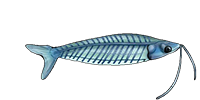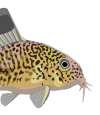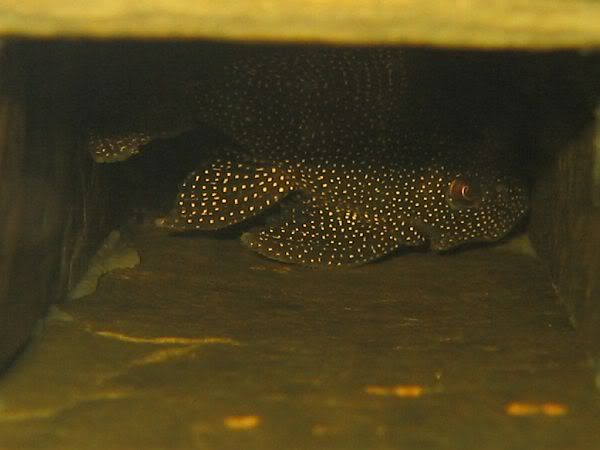Belly coloration
- Jon
- Posts: 584
- Joined: 17 Feb 2005, 07:03
- I've donated: $5.00!
- My images: 21
- Spotted: 16
- Location 1: San Diego, CA
Belly coloration
Having kept both L-66, 260, and 333, I have seen quite a bit of variation on stomach coloration. I was told once that males, for the most part, carried marbled bellies, while females were clean. As a general rule, this rule seems applicable to both my L-333 and L-260, but my L-66 ALL seem to have white bellies, last I checked. However, they spawn regularly. I do recall one of my L-66 specimens having some minor reticulation on his belly, but it disappeared--how can that be? I haven't recently glanced at my dominant male, but my subdominant has a cleanm white stomach-he's fathered at least one brood, so he's a male for sure, and IIRC, the dominant specimen has quite a nice white rump also. So is belly coloration devoid from that particular species or do I just house a couple of genetic exceptions?
Last edited by Jon on 03 Oct 2005, 22:10, edited 2 times in total.
-
bronzefry
- Posts: 2198
- Joined: 31 Aug 2004, 16:01
- I've donated: $100.00!
- My articles: 6
- My images: 12
- My cats species list: 17 (i:0, k:0)
- My aquaria list: 7 (i:7)
- Spotted: 6
- Location 1: Sharon, Massachusetts, US
- racoll
- Posts: 5258
- Joined: 26 Jan 2004, 12:18
- My articles: 6
- My images: 181
- My catfish: 2
- My cats species list: 2 (i:2, k:0)
- My aquaria list: 1 (i:0)
- Spotted: 238
- Location 1: London
- Location 2: UK
I've got an L333 that i'm very sure is female. next time she goes up the glass, i'll let you know, and try and get a few pics.
My male L262 has a slightly marbled belly:

My other one (which i'm hoping will be a female) has a much cleaner belly.
I'll try to get some pics of her too.
I'll be buying a few more, and i'll use this character to help me decide!
My male L262 has a slightly marbled belly:

My other one (which i'm hoping will be a female) has a much cleaner belly.
I'll try to get some pics of her too.
I'll be buying a few more, and i'll use this character to help me decide!
- drpleco
- Posts: 709
- Joined: 23 Jun 2005, 03:01
- My images: 2
- My cats species list: 43 (i:0, k:0)
- Spotted: 1
- Location 2: Wausau, WI
- Contact:
I was just about to ask the same question about my bristlenoses. I have 2 females with spotted bellies, two males with a few spots, and one female with a clean, white belly. From the top, they all look identical. Is this normal variation or am I working with different species? This is my breeding group so I'd like to avoid hybridization.
I know that a. claro have white bellies, but I'm pretty sure that my female isn't one.
any ideas?
I know that a. claro have white bellies, but I'm pretty sure that my female isn't one.
any ideas?
- racoll
- Posts: 5258
- Joined: 26 Jan 2004, 12:18
- My articles: 6
- My images: 181
- My catfish: 2
- My cats species list: 2 (i:2, k:0)
- My aquaria list: 1 (i:0)
- Spotted: 238
- Location 1: London
- Location 2: UK
- Jon
- Posts: 584
- Joined: 17 Feb 2005, 07:03
- I've donated: $5.00!
- My images: 21
- Spotted: 16
- Location 1: San Diego, CA
I couldn't help but notice that one of your L-262 has very fine spots. I have a similar predicament in which, of my trio, which were supposedly caught from the same vicinity, one has the same fine spots as the female in the center. Is this merely a coloration difference or a separate species altogether?
- Yann
- Posts: 3617
- Joined: 30 Dec 2002, 20:56
- I've donated: $20.00!
- My articles: 8
- My images: 275
- My cats species list: 81 (i:0, k:0)
- My BLogs: 2 (i:3, p:81)
- Spotted: 109
- Location 1: Switzerland
- Location 2: Switzerland
- Interests: Catfish mainly form South America, Cichlids, Geckos, Horses WWII airplanes, Orchids
- racoll
- Posts: 5258
- Joined: 26 Jan 2004, 12:18
- My articles: 6
- My images: 181
- My catfish: 2
- My cats species list: 2 (i:2, k:0)
- My aquaria list: 1 (i:0)
- Spotted: 238
- Location 1: London
- Location 2: UK
Interesting. I thought the usual practice would be to lump them, especially if they have a limited distribution and the same catch locality (which i presume is the same). They were on the same list as L260 (Tapajos) and were flown out of Recife.I would treat these as seperated species...
I've seen a few of these "micro-spot" L262 before. Second fish down in this post: http://www.planetcatfish.com/forum/view ... light=l262
They do appear quite dfferent though. I'll try and get some more shots when they have settled down.
Have you got any photos of yours Jon?
- Jon
- Posts: 584
- Joined: 17 Feb 2005, 07:03
- I've donated: $5.00!
- My images: 21
- Spotted: 16
- Location 1: San Diego, CA
-
bronzefry
- Posts: 2198
- Joined: 31 Aug 2004, 16:01
- I've donated: $100.00!
- My articles: 6
- My images: 12
- My cats species list: 17 (i:0, k:0)
- My aquaria list: 7 (i:7)
- Spotted: 6
- Location 1: Sharon, Massachusetts, US








